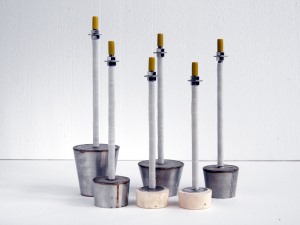Two common methods of lining the intermediate frequency furnace
Two common methods of lining the intermediate frequency furnace
Intermediate frequency furnace lining material is also called intermediate frequency furnace lining material, intermediate frequency furnace dry vibrating material, intermediate frequency furnace dry pounding material, intermediate frequency furnace ramming material, etc. It is divided into acidic, neutral and basic furnace lining materials. Acid furnace lining materials are made of high-purity quartz, Fused silica is the main raw material, and composite additives are used as sintering agents; the neutral furnace lining is made of alumina and high-alumina materials as the main raw materials, and the composite additives are used as sintering agents; the basic furnace lining is high-purity fused corundum, high-purity Fused magnesia and high-purity spinel are used as the main raw materials, and composite additives are used as sintering agents.
Alkaline furnace lining: mainly used for melting all kinds of high alloy steel, carbon steel, high manganese steel, high chromium steel, tool steel, stainless steel and other alloy steel.
Acid lining: Mainly used for the working lining of coreless induction furnaces for melting and holding cast iron.
Acid, neutral and basic furnace linings are widely used in coreless intermediate frequency furnaces and cored induction furnaces, as intermediate frequency furnace lining materials for melting gray cast iron, ductile iron and cast iron alloys, melting carbon steel, alloy steel, high manganese Steel, tool steel, heat-resistant steel, stainless steel, molten aluminum and its alloys, molten copper, brass, cupronickel and bronze and other copper alloys.
There are two kinds of knotting methods for intermediate frequency thermal induction furnace lining, wet knotting and dry knotting. Both methods can be used for knotting of acid intermediate frequency furnace lining, neutral furnace lining and basic furnace lining.
Intermediate frequency furnace wet knotting refers to the knotting by adding water, water glass, brine and other adhesives to the lining knotting material. Since the knotting material contains a certain amount of water, there is less dust during construction and good formability. However, there are also a series of shortcomings in wet knotting: the lining material knotted in the intermediate frequency furnace is not dense enough, and the refractoriness of the lining decreases; the drying time of the lining is long; the moisture in the lining is gasified. The insulation performance of the furnace decreases. If it is not handled well, it often leads to the breakdown of the inter-turn fire, and may also cause a short circuit to the ground. Therefore, for the larger smelting intermediate frequency furnace, the wet lining should be avoided as much as possible.
The dry furnace building method is currently widely used in the furnace building of the crucible induction furnace. The dry intermediate frequency furnace building method without cement can maximize the refractory performance of the lining material and make the sintered layer of the furnace lining. Thinning, thickening the powder layer, reducing the heat dissipation loss of the furnace lining, reducing the tendency of furnace lining cracks, and improving the safety and reliability of the furnace lining.

Related News
- Introduction of construction method of ramming material in intermediate frequency furnace
- How to choose the material of furnace lining
- The difference between rammer and castable
- Application direction of intermediate frequency furnace refining
- Introduction to the construction method of dry ramming material
- Do you know the production process and control points of breathable bricks?
- The application of argon blowing technology at the bottom of the intermediate frequency furnace
- Method for prolonging service life of intermediate frequency furnace lining
- In addition to diffused breathable bricks, there are those types of breathable bricks
- What are the advantages of coil cement
- What are the key points for the selection of intermediate frequency furnace lining materials? Do you really know?
- What causes the damage to the furnace lining?
- Introduction to the composition structure and function of ramming material
- Instructions for use of diathermy furnace knotting material
- What should I do if the intermediate frequency charge is knotted?
- What kind of furnace lining is qualified
- Analyze the benefits of using coil cement
- How to Correctly Repair Intermediate Frequency Furnace Lining
- What raw materials can be used for breathable brick products
- How to remedy the problem of cracks in the ramming material


